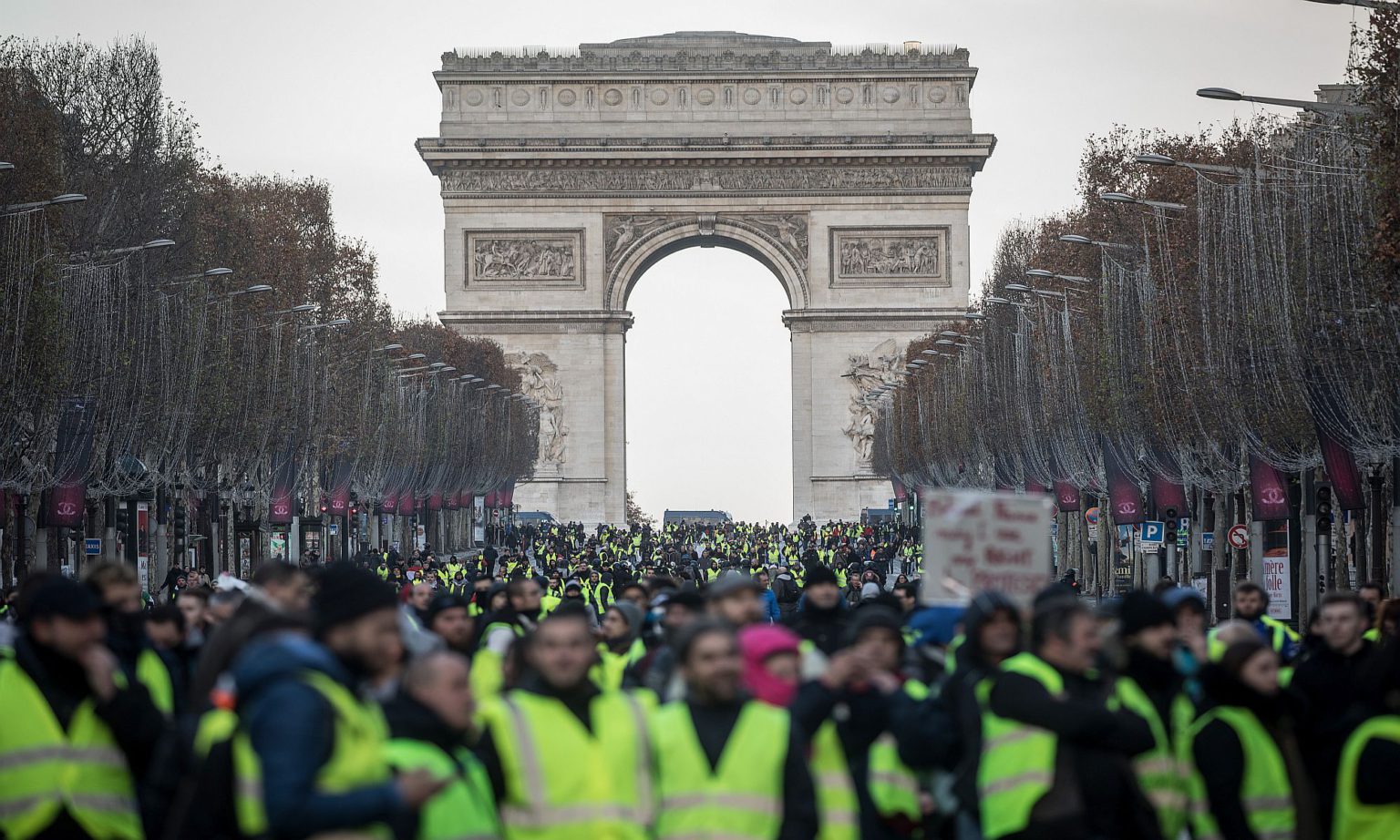
Long-read
Gilets jaunes: the French insurrection one year on
How a fuel-tax protest turned into a full-blown revolt against the elites.
Want to read spiked ad-free? Become a spiked supporter.
One year ago, 288,000 protesters took to the streets in over 2,000 locations across France. Dressed in their unmistakable hi-vis jackets, the gilets jaunes (yellow vests) blockaded highways and petrol stations, occupied roundabouts and toll booths, and marched through town centres. The protests were initially sparked by a hike in fuel tax but they quickly came to embody a wider resentment towards the status quo. This weekend will be the yellow vests’ acte 53 – the 53rd consecutive week of protest to mark the anniversary of the movement.
Just a year-and-a-half after the election of President Macron, which was hailed by liberals across the West as a turning point against the populist wave of 2016, the yellow-vest movement staged what would become the most significant revolt in France since les événements of May 1968. The French working classes, who had for so long been marginalised economically, politically and culturally, were finally making their voices heard.
A proposed hike in fuel tax was the spark that lit the fuse. Priscilla Ludovsky, an entrepreneur who sells cosmetics online, started a Change.org petition back in May calling for fuel prices to be lowered. Initially, it only had a small amount of traction. But it was picked up by local radio and in a local newspaper article, which went viral on Facebook. By October the petition had gained over 800,000 signatures. Truck drivers Eric Drouet and Bruno Lefevre created a Facebook event calling for people to block roads on 17 November. But this only gives a tiny glimpse of what was happening online – all kinds of viral videos, petitions and Facebook groups were springing up. Though some figures, like Drouet, emerged as unofficial spokespeople, suddenly finding themselves invited on to TV debates with politicians, the movement began without leaders and has remained leaderless to this day.
Peripheral France
The causes of the yellow-vest revolt go far deeper than the fuel tax. Nevertheless, the tax is a useful prism through which to understand the movement, and, in particular, the chasm between the elites who make decisions and the people on the receiving end of them.
On a purely technocratic basis, the fuel tax makes sense. The French government is committed to meeting its international obligations to reduce CO2 emissions. The fuel-price hike would be used to finance renewable-energy projects and would discourage the use of diesel and petrol cars.
But then the actual politics kick in. The fuel-tax hike was implemented at a time when the price of diesel had already risen by 23 per cent in a single year. While only 13 per cent of people in Paris drive cars, people who live outside the major cities rely heavily on their cars and they were being hammered by the policy. A carbon tax that disproportionately affected the working class was only ever going to add insult to injury. As one oft-repeated yellow-vest slogan goes: ‘The government talks about the end of the world. We are talking about the end of the month.’
Another source of irritation was the government’s decision to cut the speed limit on rural roads from 90km/h to 80km/h (around 50mph) in early January. Perhaps a minor issue in the grand scheme of things, but again, this was experienced by many people as a needless imposition from an aloof and indifferent elite. Many saw it as an excuse to make money out of speeding tickets. In response, the yellow vests managed to take nearly 60 per cent of the country’s speed cameras out of operation, usually by covering them in tape, painting them black, or smashing them up.
These measures came against a broader backdrop of widening regional inequality. More than 10 years ago, geographer Christophe Guilluy foresaw a backlash to these developments when he came up with the concept of ‘peripheral France’. This described the France of post-industrial towns, urban sprawl, villages and suburbs that have been left behind – or actively excluded – from the modern globalised economy.
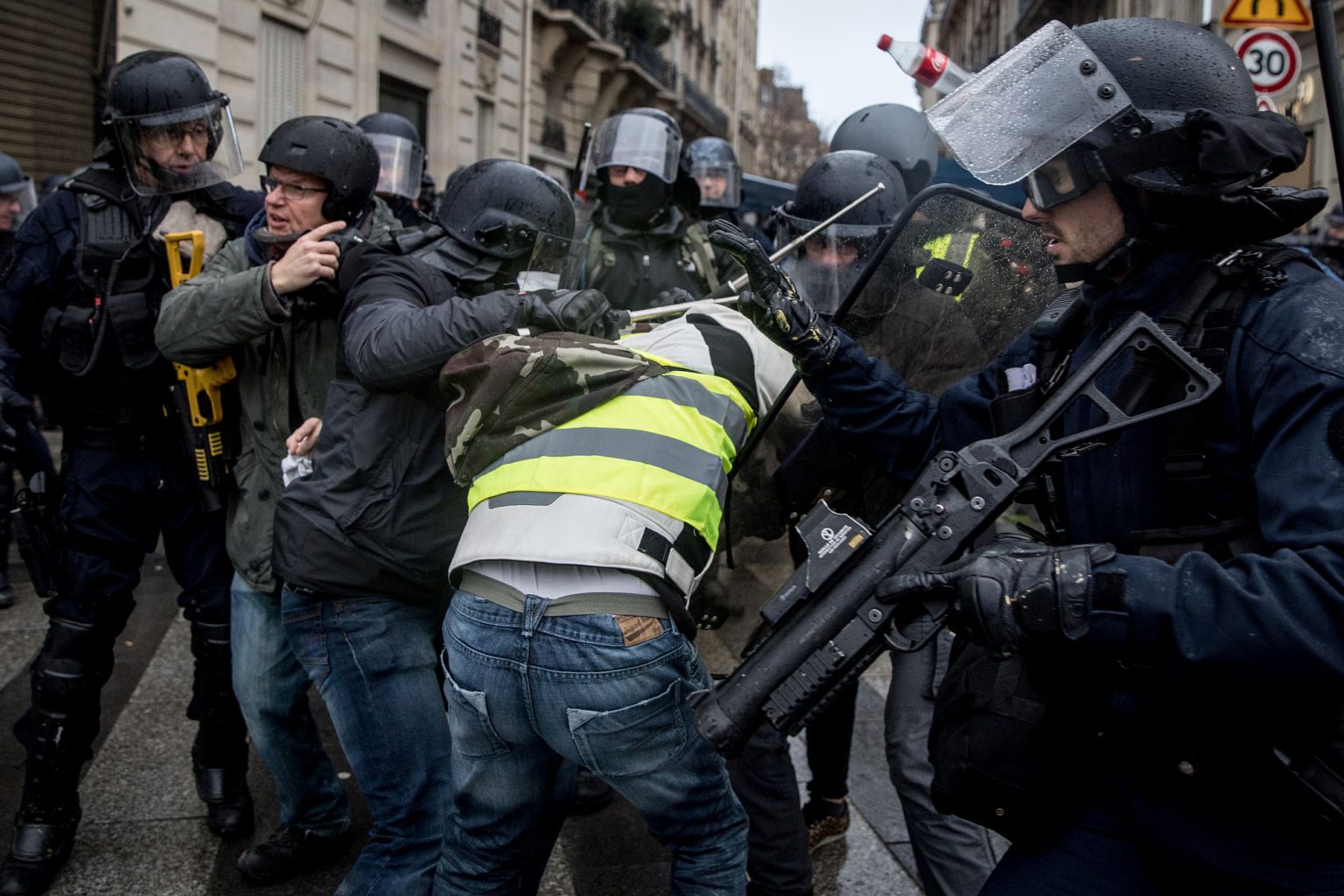
As Guilluy points out in Twilight of the Elites: Prosperity, Periphery and the Future of France, ‘peripheral France’ actually encompasses the majority of citizens – around 60 per cent of the population according to Eurostat figures. Despite this, government policy for the past four decades has consistently favoured larger metropolitan areas. Because the lion’s share of state funding for transport, health and education goes to the cities, people are having to drive further and further afield to access basic services. Between 2000 and 2010, 75 per cent of growth occurred in France’s metropolitan areas, and the GDP of these areas is now 50 per cent higher than the rest of the country. Across the West, working-class people are living further and further away from where their country’s wealth is being generated.
According to Guilluy, the French working class has effectively been decommissioned. Its members are surplus to requirements in the globalised economy. The prospects for peripheral France are gloomy. People who live in these areas suffer high rates of unemployment and many who are employed live precariously. A gilet jaune could be earning anything between 1,000 and 2,000 euros per month. He or she could be unemployed or even middle class. But as Guilluy explained to spiked: ‘[The gilet jaunes] know that even if they have a job today, they could lose it tomorrow and they won’t find anything else.’ Meanwhile, admission to the big cities to find work has become nigh-on impossible as housing costs soar beyond reach. Over recent years, these regional disparities have started to express themselves through new political divides. The story of Paris vs the France of the yellow vests is also true of London vs Brexit Britain, or Milan vs the rest of populist Italy.
A revolt of the ignored
As the French working class has been economically marginalised, it has been sidelined from politics, too. The denial of democracy has forced people to find new and innovative – sometimes insurrectional – ways of making their voices heard.
The most blatant attempt by the elites to deny democracy came after the 2005 referendum on the European Constitution. Just before the vote, leading pollster Roland Cayrol noted the ‘clear division between a well-off, confident France and an anxious, struggling France’, with blue and lower-grade white-collar workers, the self-employed and farmers firmly in the No camp. In the end, 55 per cent of the French electorate voted No. But the political class in France and in the EU all agreed that the message from the No vote was insufficiently clear, and just a few years later the rejected constitution was simply repackaged as the Lisbon Treaty and signed into law.
The French are, of course, famous for protesting and going on strike. But this noisy engagement disguises the way the French political system militates against democracy. The French presidency is one of the most powerful offices in the democratic world. This makes France, in effect, a ‘republican monarchy’. Parliament, on the other hand, is toothless. It was rendered even more so by reforms in 2001 that changed the electoral calendar to align parliamentary elections with presidential ones. Although the reforms shortened the presidential term, they also entailed the removal of midterm elections that could put an electoral check on presidents. For historian Robert Tombs, the monarchical nature of the presidency makes it prone to political failure:
‘Policies are frequently decided by the president without significant consultation, then, in the absence of an effective legislative body to channel criticism within the system, are instead abandoned in the face of public outcry, including strikes and resistance in the streets.’
The political parties must also take responsibility for failing to give voice to the concerns of working-class people. Nearly three-quarters of French people think that politicians are ‘corrupt’ and 87 per cent feel that governments (of the left and the right) take no interest in ‘people like them’. Consequently, the centre parties have been reduced to rumps. In the 2015 regional elections, the centre-right Republicans, the centre-left Socialist Party, the Left Front and the Greens were voted for by just 18 per cent of the working-class electorate.
The French working class has been economically marginalised, and sidelined from politics
Working-class voters had been slowly drifting away from the Socialists since the 1980s, when Francois Mittérand’s government quickly abandoned its planned socialist reforms in order to embrace European integration. By the time of the 2017 presidential election, just five years after its first presidential victory in decades, the Socialist Party had slumped to just 6.36 per cent of the first-round vote.
The 2017 election was supposed to be a watershed moment. France had rejected populism and had instead embraced a new centrist politics. Emmanuel Macron was held up as a liberalising reformer, an adept technocrat and a popular anti-populist. The former Rothschild banker was to be the saviour of France and of the EU. The Economist, the bible of liberal centrists, celebrated his election victory by depicting him as a modern-day Jesus: literally walking on water.
But beneath the headlines, disenchantment with the political class was clear. Some 10million people expressed their anger by voting for Marine Le Pen, the leader of the far-right Front National (re-named National Rally in 2018). According to IPSOS polling, the only socioeconomic category to back Le Pen over Macron was blue-collar workers. Among voters who said they found it ‘very difficult’ to cope financially at their current income level, 69 per cent voted for Le Pen.
Though many voters might have relished giving the establishment a bloody nose, clearly Le Pen’s unpalatable politics was not a price worth paying. Abstentionism was perhaps a more acceptable outlet for voters’ frustrations. In the second round of the presidential election, there was a record three million votes blancs (expressing a preference for neither candidate). The legislative elections that followed had the lowest turnout in the history of the Fifth Republic.
It took the emergence of the gilets jaunes to galvanise members of forgotten France. Around the time of the first yellow-vest protests, just 25 per cent of French voters said they approved of President Macron. In contrast, 73 per cent told pollsters they supported the gilets jaunes.
Experiments in democracy
Despite having no leader and no official manifesto, the gilets jaunes have coalesced around popular demands for better living conditions and for a greater say in political life. Democratic reform is high on the agenda. Many protesters have the letters ‘RIC’ scrawled on their jackets or on placards, which stand for référendum d’initiative citoyenne (citizens’ initiative referendum). They are calling for a referendum to be triggered on any proposal that can gather 700,000 signatures or more. They argue that this would allow the public to veto laws, withdraw from treaties and amend the constitution.
Of course, the problem with referendums alone is that the political class can simply ignore or frustrate any results it dislikes, as happened in France in 2005 and as has been the story of Brexit since 2016. Real, lasting change needs real representation. Attempts to set up formal political parties have, however, been unsuccessful. Ingrid Levasseur, a care worker, set up a gilets-jaunes party in January, based around the referendum demand to contest the EU elections. Early polls put the party at 13 per cent – just behind Macron’s La Republique En Marche and Le Pen’s Rassemblement National or National Rally. But just three weeks later, Levasseur quit. Lots of gilets jaunes were angry at what they saw as a use of the movement for personal political gain. Another prominent campaigner, Jacline Mouraud – who became famous for a viral video attacking Macron – also set up a party in January, Les Émergents, to contest the local elections in 2020. But by April, a number of members resigned from the party, not wanting to be part of a ‘cult of personality’.
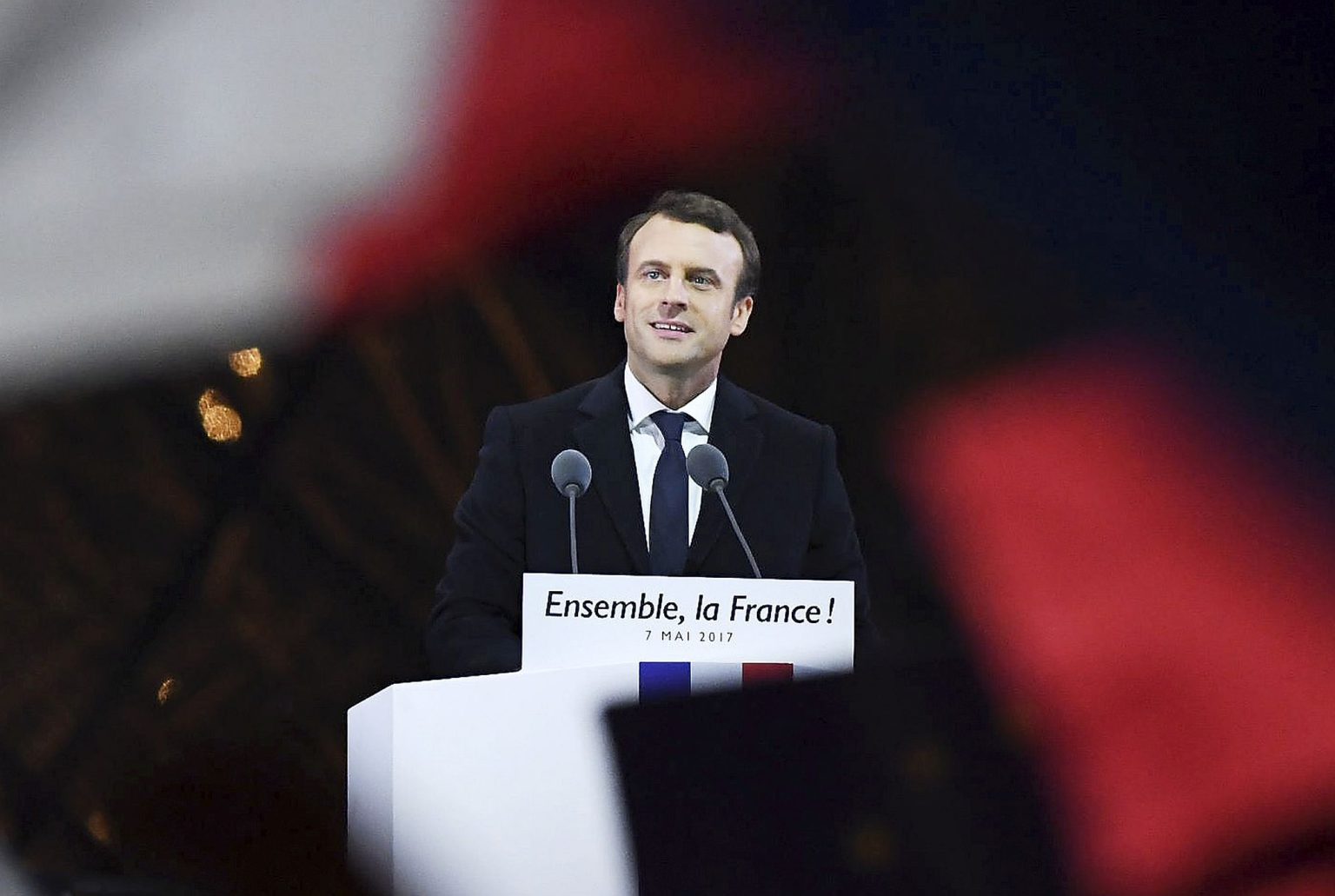
Others have experimented with other forms of direct democracy. In Commercy, a small north-eastern town which has faced two decades of industrial collapse, a group of yellow vests have started their own citizens’ popular assembly. They constructed a wooden hut in the town square – nicknamed the Chalet of Solidarity – to hold meetings and to organise (though it has since been demolished by the mayor). From these regular meetings they have elected delegates to attend national assemblies, meeting with other delegates involved with similar initiatives across France. Some 600 yellow-vest delegates from 200 groups gathered in Montpellier earlier this month to discuss plans for the big anniversary on 17 November.
The revenge of the elites
Almost as soon as the first yellow vests emerged, members of the liberal establishment felt the need to denounce them. President Macron was quick to decry the protests as ‘shameful’. Ministers immediately briefed the press that the yellow vests had links to the far right. Macron’s strongest rebuke was made in his New Year’s message, which he used to brand the yellow vests a ‘hate-filled crowd’, who attack ‘elected representatives, the forces of law and order, journalists, Jews, foreigners, homosexuals’.
The centre-left daily Libération noted that following the first weekend of protests, commentators were divided between those who saw the protesters as representing the ‘just anger of the people’, and those who saw them as a ‘band of polluting oafs, addicted to their cars, who need to be dealt with by the police’. One prominent Brussels correspondent tweeted that the yellow vests were simply a ‘movement of hicks’.
The script could have almost been written in advance. The dismissal of working-class grievances or any challenge to the status quo as ‘fascist’ or ‘racist’ has become a tragic feature of politics common to almost all Western nations. Much of the same hysteria that followed the Brexit vote appeared in France in reaction to the yellow vests. The gilets jaunes are, in class terms, the French equivalent of the ‘deplorables’ or ‘gammon’. Only in France, the elite backlash took a violent turn.
There have, of course, been many acts of violence from yellow-vest protesters. The third weekend, for instance, was one of the most violent, as protests in Paris turned into full-blown riots. In Paris, the Arc de Triomphe was vandalised, daubed with graffiti. A bust of Napoleon was smashed. Over 100 cars were set on fire. In early January, protesters broke into a government ministry with a forklift truck. On many weekends, the day began peacefully as protesters from the provinces marched up and down the Champs Élysées. But by the early evening, a different crowd had joined the fray, often among them some black-bloc agitators, some donning a yellow vest, others not.
Nevertheless, the violence from the police has been extraordinary and out of all proportion. Between November 2018 and June 2019, according to figures compiled and verified by independent journalist David Dufresne and Médiapart, 860 protesters were injured by the police – 315 suffered head injuries; 24 lost the use of an eye; and five had hands torn off. Among these victims are not only protesters but also journalists and medics. Police have been filmed beating elderly and disabled people, as well as using tear gas, water cannons and rubber bullets against peaceful protesters. The main source of injuries has been ‘Flashball’ rubber bullets. This non-lethal weapon has been banned in every EU country except France.
The supposedly ‘liberal’ Macron has also presided over a wider climate of authoritarianism in response to the gilets jaunes. In January, French MPs passed draconian measures to ban unauthorised protests. In March, prime minister Édouard Philippe even instituted a blanket ban on protest in some of the areas most hit by vandalism, including the Champs Élysées, as well as certain parts of Bordeaux, Toulouse and Nice. Faced with running the gauntlet of tear gas, rubber bullets and possible arrest, protesting became less and less attractive as the months passed, leading to an ever-dwindling turnout.
The search for solidarity
The gilets jaunes have won some important victories, even if the establishment has won the war overall. The fuel-tax hike was put on hold, and, just three weeks into the protests, President Macron unveiled a €10 billion package of wage increases and tax cuts for low earners and pensioners. Companies were also encouraged to give out Christmas bonuses, which would be tax free up to 1,000€.
But perhaps the most important consequences have been less tangible. The hi-vis jackets became the defining symbol of a movement that made a very simple but important statement: ‘We exist.’ Those who had been long forgotten could be ignored no more. The fact that these yellow jackets are owned by all French drivers – it is a legal requirement to carry one in your car in case you break down at night – made it easy for people to identify themselves with the movement. And it did something else, too: it fostered a new and necessary solidarity in an otherwise atomised society. Long may the revolt continue.
Fraser Myers is a staff writer at spiked and host of the spiked podcast. Follow him on Twitter: @FraserMyers.
Pictures by: Getty
Who funds spiked? You do
We are funded by you. And in this era of cancel culture and advertiser boycotts, we rely on your donations more than ever. Seventy per cent of our revenue comes from our readers’ donations – the vast majority giving just £5 per month. If you make a regular donation – of £5 a month or £50 a year – you can become a and enjoy:
–Ad-free reading
–Exclusive events
–Access to our comments section
It’s the best way to keep spiked going – and growing. Thank you!
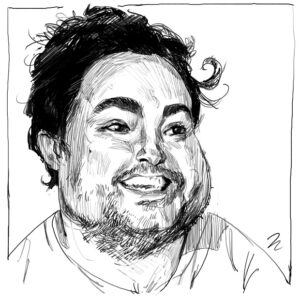

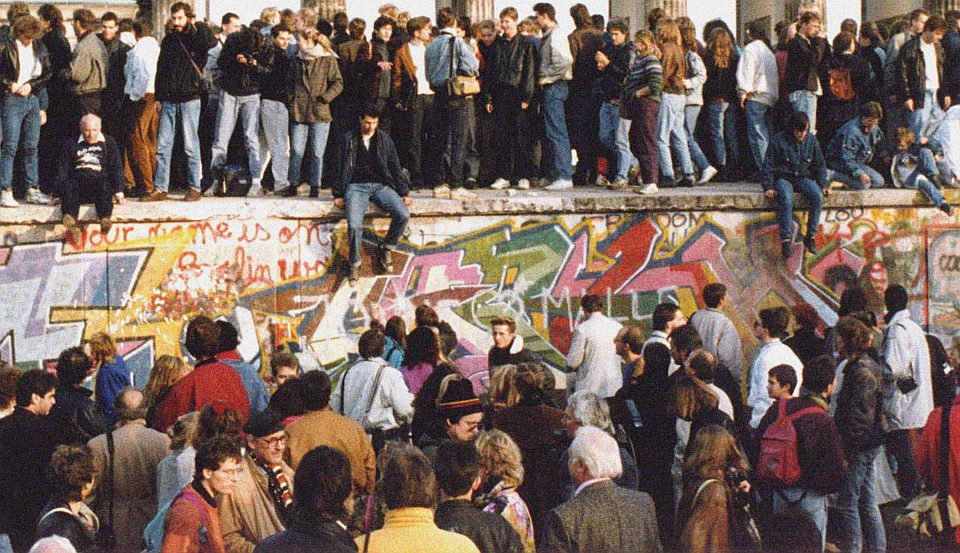




Comments
Want to join the conversation?
Only spiked supporters and patrons, who donate regularly to us, can comment on our articles.